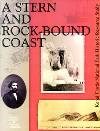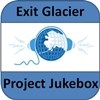|
Kenai Fjords National Park is your park. Whether you are planning a trip to south-central Alaska or exploring from home, learn more about the history of the park by exploring these articles, books, recordings, and more about the history of this special area. Recent park management documents or current laws and policies can be found in the park management section. Audio Projects and Books
A Fragile Beauty: An Administrative History of Kenai Fjords National Park (2010) by Theodore Catton. Established in 1980, by the Alaska National Interest Lands Conservation Act, this book explores the administrative history of Kenai Fjords National Park. (coming soon as a 508-compliant PDF) 
A Slice of Early Seward: How Archeology Provides a glimpse into Daily Life in this Frontier Town (2013) by Dan Trepal. Thanks to the archeological investigations of the Seward Privy Project, researchers learned fascinating details about life in early Seward, Alaska.

A Stern and Rock-Bound Coast (1998) by Linda Cook and Frank Norris. The historic resource study of Kenai Fjords National Park. 
Exit Glacier Project Jukebox is a digital branch of the University of Alaska Fairbanks Oral History Program. This project highlights conversations with long-term residents of Seward, Alaska about their lives, and the traditional activities in the area around Exit Glacier from 1950-1980. Articles and Resource BriefsResources about the National Park Service
|
Last updated: March 27, 2018
